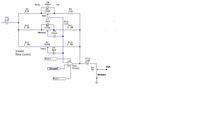obrien135
Full Member level 5
- Joined
- Nov 10, 2009
- Messages
- 240
- Helped
- 5
- Reputation
- 10
- Reaction score
- 5
- Trophy points
- 1,298
- Location
- Connecticut
- Activity points
- 3,259
When I turn up the volume on one of the channnel of an audio circuit that I devised. It doesn't give any sound untill the pot is about half way turned up. Then it is distorted. It is preceeded by a tone control circuit using op amps. The power output is a push pull arrangement. I checked the linearity of the pot and it seems OK. All the biasing before and after it is good. I don't have a scope available right now. What do you think might be the problem?



